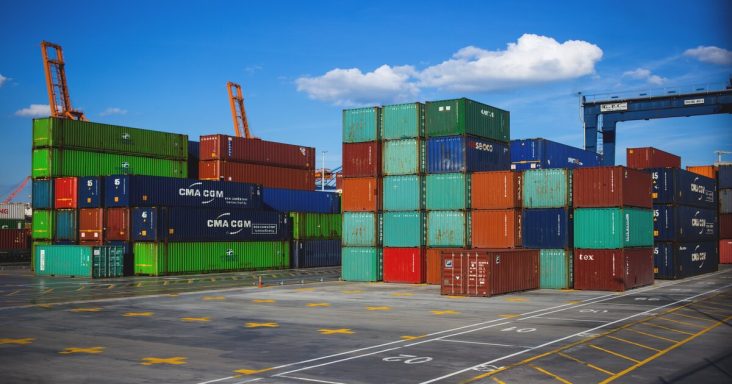Shipper survey highlights importance of pricing and timely shipments, visibility systems
by April 13, 2022 2:07 pm 1,250 views

Shippers said price is the top factor when selecting a carrier to transport their freight, according to a shipper survey. Fast, on-time performance and real-time visibility ranked second and third, respectively.
In a report, Transport Intelligence (Ti), in partnership with project44, recently released of results of a late 2021 survey that identifies the selection criteria shippers use when choosing a carrier. Respondents comprised 234 shippers, including retailers and manufacturers.
According to the report, real-time visibility was ranked higher than factors such as customer service, safety record and geographical coverage. Real-time visibility is the ability to track items in transit from origin to destination at any given point, the report shows. The goal of the visibility is to improve and strengthen the supply chain by making data available to all stakeholders.
“Shippers now expect, as a pre-requisite, that their carriers and logistics service partners must provide some form of real-time visibility – at least at the shipment level,” said Ken Lyon, advisory board member for Ti. “It is a poor reflection on the logistics industry as a whole that this is still considered an exception rather than the norm.”
Carriers that don’t offer the visibility might be at a competitive disadvantage as more shippers want it as a base requirement when they tender freight, the report shows. With carriers that provide visibility, shippers can more accurately manage delays and exceptions and create more certainty in planning.
Managing exceptions is one of the most time-consuming and costly activities in supply chain management, according to the report. The ability to identify issues and find solutions early reduces costs, including fewer penalties, lower transportation costs and reduced detention payments.
Shippers said the top issue facing transportation operations was the driver shortage. Rising freight rates and unreliable carrier performance ranked second and third, respectively. While project44 noted there’s “no silver bullet” for existing labor shortages, real-time visibility increases the efficiency of existing resources by reducing manual processes. It can also help shippers measure carrier performance and create a feedback loop, contributing to continuous improvements.
The report also shows that 38.7% of shippers book freight directly with the carrier under contract. Nearly one-fourth of shippers use a broker, while 21.7% book freight with the carrier on the spot market. Only 15.3% book with a digital freight platform or digital freight forwarder.
Shippers see carrier on-time performance of 71.7% as suboptimal and start looking for new carriers operating below this, according to the report. On average, carrier on-time performance is 82.9%, and it fell during the COVID-19 pandemic.
According to the report, 57.4% of shippers require carriers to provide real-time visibility before they can earn shippers’ business. Still, only 20.2% of shippers said they operate a fully transparent supply network or one with real-time visibility across all modes and regions. The remainder have partial visibility on their shipments. Over the next five years, 38.3% of shippers look to have the visibility across all modes and regions.
Only 20.2% of shippers said their carriers provide real-time visibility into their partner operations. According to the report, this implies that shippers largely don’t have visibility over multi-modal trans-shipment services. Project44 expects an acceleration in the adoption of systems that provide visibility across the supply chain.
“Shippers should seek a [real-time visibility] partner that provides ‘connective tissue’ between disparate systems in order to create information symmetry, creating an environment that allows all partners to easily communicate and collaborate,” according to project44.
According to a recent study by the Journal of Commerce, achieving real-time visibility across every mode remains a challenge.
“Legacy systems were limited by the scope of data collected, and a lack of interoperability and adoption of the multifaceted modern offerings of today’s third-party visibility providers has been slow,” according to the study. “The tendency of many companies to track and manage visibility data in-house is compounded by confusion around a fragmented market of solutions.”
The JOC study included a January survey that showed respondents were not satisfied with their ocean freight visibility. That likely was a result of respondents using in-house managed visibility that included data from outside sources, according to the study. Only 11% of respondents said they used a standalone third-party visibility system.
Among the respondents who used a standalone third-party system, the majority were more favorable of their overall visibility.
Nearly 80% of respondents said better visibility would have helped with the weaknesses that the pandemic revealed in their supply chains. The disruptions led more than half of respondents to invest in new visibility services. Customer service was the No. 1 factor in making the investments. Inventory management and freight-cost reduction/control were tied for second.
Third-party providers are “generally better suited to accounting for a fast-changing environment and being able to convey actionable insights,” according to the study. “As the horizons of visibility expand, the possible risk mitigation and customer-service applications are significant.”
